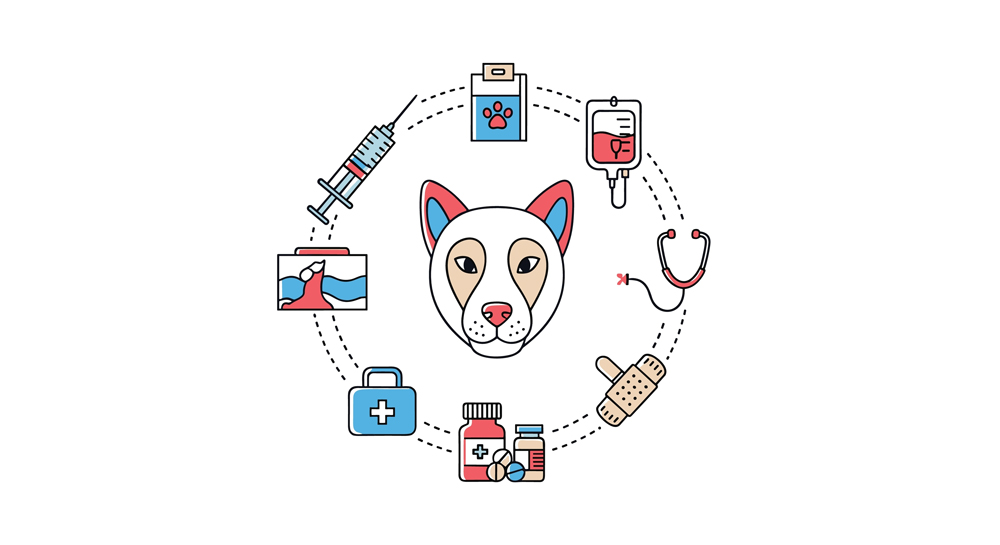End-of-life veterinary care is one of the most sensitive and significant aspects of companion animal health. As pets have become fully integrated into families, the expectations for compassionate and comprehensive care in their final stages of life have grown considerably. Advances in veterinary medicine now extend far beyond traditional treatment and surgery, embracing palliative care, pain management, hospice support, and counseling for grieving owners. This emerging focus on end-of-life veterinary care news reflects the deepening bond between humans and animals, as well as the recognition that quality of life matters as much as longevity. Recent developments in the field are reshaping how veterinarians, owners, and society as a whole approach this delicate but essential phase of care.
The Rising Importance of Veterinary Hospice
Veterinary hospice is becoming increasingly recognized as a vital part of animal health care. Much like hospice for humans, veterinary hospice emphasizes comfort and dignity rather than curative treatment when an animal is nearing the end of life. This approach focuses on maintaining quality of life, alleviating pain, and supporting families through difficult decisions. Advances in veterinary training have led to the development of specialized programs in hospice and palliative care, equipping veterinarians with the skills to guide owners through this emotional journey. The growing availability of hospice services has made it possible for pets to spend their final days in familiar, loving environments, supported by both medical and emotional care.
Advances in Pain Management and Palliative Care
Pain management has always been central to end-of-life care, but new advances are improving the options available for pets in decline. Medications such as opioids, non-steroidal anti-inflammatory drugs, and neuropathic pain treatments are now being used more precisely and safely, ensuring effective relief without excessive side effects. Beyond pharmaceuticals, integrative therapies such as acupuncture, laser therapy, massage, and physical rehabilitation are increasingly employed to reduce discomfort and support mobility. Nutritional support tailored to the unique needs of terminally ill animals also plays a role, providing strength and comfort even in the face of declining health. These advancements create a comprehensive model of palliative care that prioritizes both physical comfort and emotional well-being.
The Emotional Impact on Owners and Families
End-of-life care for pets is as much about supporting the human family as it is about caring for the animal. Owners often face overwhelming emotions when confronted with the decline of a beloved companion. Veterinarians have become more attuned to the psychological and emotional needs of clients, offering grief counseling, resources, and referrals to support groups. Advances in veterinary education now include training on communication and empathy, ensuring that practitioners can guide families with compassion and sensitivity. The acknowledgment of pet grief as a valid and significant experience has also led to greater societal support for mourning owners. These changes reflect an important cultural shift, one that validates the depth of the human-animal bond.
Home Euthanasia and the Shift Toward Familiar Settings
One of the most significant trends in end-of-life veterinary care is the growing popularity of home euthanasia. Many owners prefer their pets to pass peacefully in familiar surroundings, surrounded by family, rather than in a clinical setting. Advances in mobile veterinary services have made this possible, with practitioners offering compassionate care directly in the home. Home euthanasia allows for a less stressful and more personalized experience, giving owners the opportunity to say goodbye in their own way. This shift toward home-based care represents an important development in veterinary medicine, aligning medical practices with the emotional and psychological needs of both pets and their families.
The Role of Telemedicine in End-of-Life Care
Telemedicine has expanded into many areas of veterinary practice, including end-of-life care. Virtual consultations allow veterinarians to assess an animal’s quality of life, discuss palliative options, and provide guidance without requiring stressful clinic visits. For families struggling with mobility issues or distance from veterinary facilities, telehealth provides vital access to expertise. This technology also supports ongoing communication, enabling veterinarians to adjust pain management protocols or provide reassurance as conditions evolve. Telemedicine ensures that care remains consistent and accessible during the most critical moments, reinforcing the bond of trust between veterinarians and clients.
Ethical Considerations in End-of-Life Decisions
End-of-life veterinary care inevitably raises profound ethical questions. Deciding when euthanasia is appropriate requires careful consideration of the animal’s quality of life, the family’s emotional needs, and the veterinarian’s professional judgment. Advances in quality-of-life assessment tools are helping guide these decisions by providing structured evaluations of factors such as mobility, appetite, pain, and overall enjoyment of life. These tools allow owners to make informed choices grounded in both emotion and evidence. The ethical framework of veterinary care continues to evolve, with an emphasis on balancing compassion with responsibility. Clear communication between veterinarians and owners remains central to navigating these challenging decisions with dignity and respect.
Advances in Quality-of-Life Assessment
Quality-of-life assessments have become increasingly sophisticated, offering structured ways to evaluate an animal’s well-being in the final stages of life. Scales and checklists help owners and veterinarians measure factors such as appetite, mobility, hydration, pain, and overall happiness. These tools not only guide decision-making about treatment and euthanasia but also empower owners to participate actively in their pet’s care. Advances in digital technology now provide apps and online platforms where owners can track daily changes and share information with their veterinary team. This collaborative approach ensures that decisions are grounded in both clinical expertise and the lived experience of the family.
Grief Support and Bereavement Resources
As the recognition of pet grief grows, so too does the availability of resources for grieving owners. Veterinary practices increasingly offer grief support programs, either in-house or through referrals to specialized counselors. Online communities and support groups provide safe spaces for sharing experiences and emotions, reducing the sense of isolation many owners feel. Advances in veterinary education emphasize the importance of acknowledging grief openly, validating the experiences of clients, and providing resources for healing. Pet loss memorial services, keepsakes, and rituals are also becoming more common, helping owners honor the memory of their companions in meaningful ways. These developments underscore the holistic nature of end-of-life care, which extends beyond the moment of passing to support long-term healing.
The Role of Veterinary Teams
End-of-life care requires a collaborative effort among veterinary teams. Veterinarians, technicians, and support staff all play crucial roles in ensuring that care is compassionate and comprehensive. Advances in training have emphasized the importance of teamwork, communication, and emotional support during this delicate stage. Veterinary technicians often provide hands-on care and emotional reassurance, while support staff manage logistics with sensitivity. This team-based approach ensures that families receive consistent support at every touchpoint, reinforcing the professionalism and empathy of veterinary practices. The integration of the entire team in end-of-life care reflects a broader commitment to excellence in veterinary medicine.
Integrative and Holistic Approaches
Holistic care has become an important part of end-of-life veterinary services, offering non-traditional therapies to complement conventional medicine. Acupuncture, massage, herbal remedies, and aromatherapy are increasingly used to reduce pain, anxiety, and stress in terminally ill animals. While evidence for some therapies is still emerging, many owners report improved comfort and peace for their pets. Integrative care focuses on treating the whole animal, addressing physical, emotional, and spiritual well-being. This approach resonates with owners seeking natural and compassionate methods to ease their pet’s transition. By incorporating integrative therapies into end-of-life care, veterinarians offer a more personalized and comprehensive model of support.
Advances in Aftercare and Memorialization
Aftercare for pets has evolved to include a wide range of options for honoring their memory. Cremation services, once simple and standardized, now offer individualized options such as private cremation, urns, and personalized keepsakes. Aquamation, an environmentally friendly alternative to traditional cremation, is gaining attention as a sustainable option. Memorialization services, including ceremonies, tribute pages, and personalized artwork, allow families to celebrate their pet’s life in meaningful ways. Advances in digital technology have also enabled virtual memorials and online remembrance communities, connecting grieving owners across the globe. These options reflect the changing cultural attitudes toward pets, recognizing them as family members deserving of dignity and honor even after death.
The Future of End-of-Life Veterinary Care
The future of end-of-life veterinary care will likely be shaped by continued advances in medical science, technology, and cultural attitudes. Improved pain management protocols, telehealth integration, and new quality-of-life assessment tools will provide families with even more support. Veterinary education will continue to place emphasis on compassion, communication, and holistic care, preparing practitioners to meet the evolving needs of clients. Advances in memorialization and grief support will expand, ensuring that families feel supported long after their pet’s passing. Most importantly, the cultural recognition of pets as integral members of the family will continue to drive innovation in end-of-life care. The field is moving steadily toward a future where every animal can experience a dignified, compassionate, and peaceful transition, and where every family receives the support they need during one of life’s most difficult moments.

